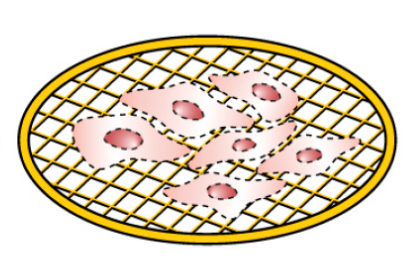-
Our products
-
View all products
-
HexAuFoil QUANTIFOIL® Holey Carbon Supports for Cryo-EM UltrAuFoil® Holey Gold Sample Supports Additional Ultrathin Continuous Carbon Layer Conventional & Continuous Carbon Films SiO2 Films Custom Cryo-EM Sample Supports and Special Treatments QUANTIFOIL® Active How our supports are packed for shipment
-
-
View all products
- Our company
- News and social updates
- Support
QUANTIFOIL® SiO2 Films

Resilient and extensively functionalizable, QUANTIFOIL® SiO2 films are robust enough to withstand extensive manual handling and FIB-milling. They are a popular choice for in situ biological imaging including cryo-electron tomography and correlated light and electron microscopy (CLEM), as well as materials science applications.
In addition, the ability to easily chemically modify SiO2 film surfaces makes them ideal when:
- Optimizing the physicochemical properties of the transmission electron microscopy supports.
- The sample support is part of the experimental protocol: for example directing the growth of a sample or to covalently attaching a biomolecule to the SiO2 surface.
Applications that may benefit from using SiO2 supports include:
- On-grid cell growth for in situ imaging techniques including CLEM and cryo-FIB, due to their robustness and similarity to glass surfaces.
- The production of FIB lamallae is aided by the robustness and resilience of SiO2.
- The ease of functionalization simplifies the attachment of biomolecules (for example DNA or microtubules) for controlled investigations.
- Semiconductor material characterization can take advantage of all these features.
Research using QUANTIFOIL® SiO2 films
Methods development for in situ structural investigation by FIB-milling and cryo-electron tomography
Toro-Nahuelpan et al. Tailoring cryo-electron microscopy grids by photo-micropatterning for in-cell structural studies. Nat Methods 17: 50-54 (2020)
Lucas and Grigorieff. Quantification of gallium cryo-FIB milling damage in biological lamellae. Proc. Natl Acad. Sci. USA 120: e2301852120 (2023)
Franken et al. Protocol for live-cell fluorescence-guided cryoFIB-milling and electron cryo-tomography of virus-infected cells. STAR Protocols 3: 101696 (2022)
Recent examples of Cryo-ET investigations using SiO2 grids
Shepherd et al. Throughput-scalable manufacturing of SARS-CoV-2 mRNA lipid nanoparticle vaccines. Proc Natl Acad Sci USA 120: e2303567120 (2023)
Winter et al. The Ebola virus VP40 matrix layer undergoes endosomal disassembly essential for membrane fusion. EMBO J 42: e113578 (2023)
Zhang et al. Molecular mechanisms of stress-induced reactivation in mumps virus condensates. Cell 186: 1877-1894 (2023)
